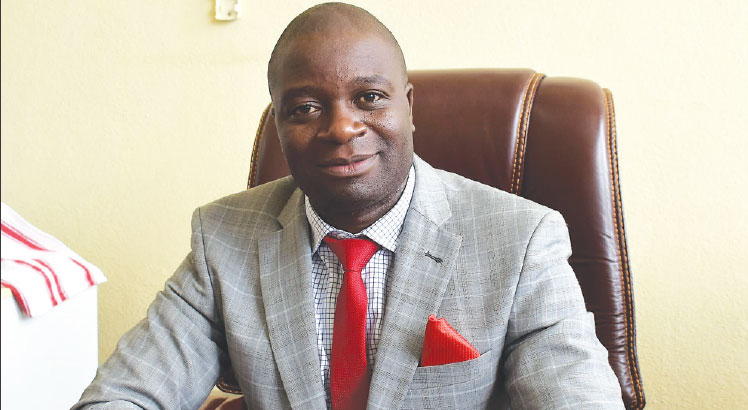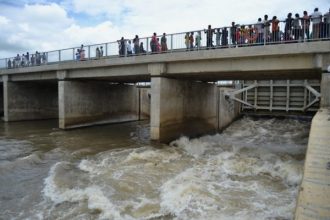Agriculture budget fails to grow sector
Treasury’s budget allocation to the agriculture sector has failed to yield desired sectoral growth over the past five years despite the sector getting 10 percent of the total budget, it has been established.
The African Development Bank (AfDB) data shows that the Malawi Government has consistently allocated at least 10 percent of the national budget to the agriculture sector to reach an annual agricultural gross domestic product (GDP) growth rate of at least six percent in line with the Comprehensive Africa Agriculture Development Programme (Caadp), an Agenda 2063 continental initiative.
The initiative aims to help African countries eliminate hunger and reduce poverty by raising economic growth through agriculture-led development.
AfDB said that the agriculture sector’s production and productivity has remained below its potential and cannot match the increasing demand from domestic and export markets.
Speaking in an interview on Tuesday, agriculture industry commentator Felix Lombe observed that despite investments made into the sector through the budget, production and productivity still remains low.

He said: “The reasons include land fragmenting, climate change and low access to inputs as well as weak market linkages.
“Reversing the trend may require actualising or implementing our new land laws to steer large-scale mechanised commercial farming, scaling up models that facilitate access to inputs and finance being piloted by several agencies.”
Lombe said farmers’ adoption of climate smart agriculture technologies should be incentivised at rural level.
On Monday, African Union (AU) agriculture, rural development, blue economy and sustainable environment commissioner Ambassador Josefa Leonel Sacko told the media that due to lack of investment in the agriculture sector, the continent is unable to strengthen its nutrition and food security.
“Why are we not on track vis-à-vis the Malabo Declaration and Caadp when you look at the nexus between agriculture and the climate change today, we cannot depend on rain-fed agriculture, so we need to be innovative and come up with a climate smart agriculture programme,” she said.
Sacko observed that despite African countries having immense natural resources vital for agricultural development, currently some 38 countries on the continent are net importers of food.
“As 30 percent of Africa’s food imports came from Russia-Ukraine, the war has affected Africa’s food security,” she told satebaw.com.
The 10 percent allocation, according Caadp, is sought to achieve agricultural growth rates of at least six percent per annum.
Underlying these investment commitments are targets for reducing poverty and malnutrition, increasing productivity and farm incomes and improving the sustainability of agricultural production and use of natural resources.
Ministry of Finance and Economic Affairs data shows that in the five years to 2022, the country’s agriculture sector has grown by an average of 4.4 percent, with 0.3 percent registered in 2018, 5.9 percent in 2019, 4.2 percent in 2020, 5.5 percent in 2021 and 6.2 percent in 2022.
On the other hand, during the five-year period, Treasury has spent an estimated K1.2 trillion on the sector with K86 billion or nine percent of the total budget in the 2018/19 financial year, K167 billion or 11.3 percent of the total budget in the 2019/20 financial year, K194.9 billion or 9.6 percent of the total budget in the 2020/21 financial year, K284.4 billion or 14.3 percent of the total budget in the 2021/22 financial year and K447.66 billion in the 2022/23 financial year.
In his State of the Nation Address delivered in Parliament on Friday, President Lazarus Ckakwera said the living conditions and poverty of many Malawians are so harsh that millions are still unable to feed themselves.
The President said in 2020 over 2.6 million people in 581 775 households were determined to be food insecure, and despite the successes of the Affordable Inputs Programme in 2021, over 1.6 million people in 367 395 households were still determined to be food insecure, which increased by more than double in 2022.
In the past three months alone, Chakwera said his administration has had to support over 3.8 million Malawians in 847 421 households in all three regions of the country with food items or cash to buy food.
He said what Malawi lacks is not policy direction or investment opportunities and public pronouncements on agricultural productivity and commercialisation through mega farms, but implementation.
Agriculture remains the mainstay of Malawi’s economy, contributing about 25 percent to country’s GDP and employing about 64 percent of the labour force.
More than 80 percent of the country’s population relies on smallholder rain-fed agriculture for food.
In Malawi, agriculture sector interventions have been guided by the National Agriculture Policy (NAP) of 2016, which will be replaced by a successor policy after 2021.
The NAP is aligned with the vision 2020 and the second Malawi Growth and Development Strategy and Malawi 2063.





